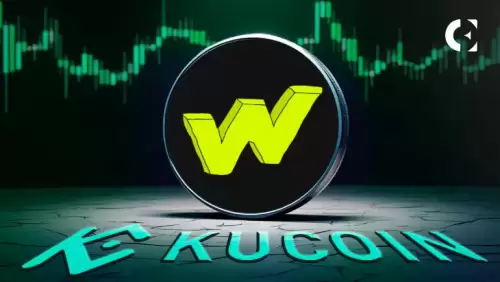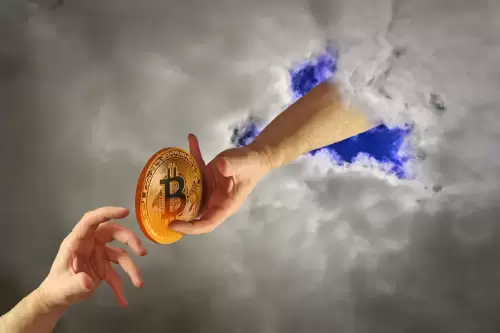 |
|
 |
|
 |
|
 |
|
 |
|
 |
|
 |
|
 |
|
 |
|
 |
|
 |
|
 |
|
 |
|
 |
|
 |
|
Cryptocurrency News Articles
JPMorgan, Crypto, and Digital Tokens: A New York Minute on Wall Street's Blockchain Buzz
Jun 19, 2025 at 10:34 pm
JPMorgan's move into digital tokens signals a major shift. We break down JPMD, its implications, and the evolving crypto landscape in a New York minute.

Yo, what's the deal with JPMorgan and crypto? Turns out, even the big banks are catching the digital token fever. JPMorgan's new USD deposit token, JPMD, is making waves, signaling a serious shift in how Wall Street views blockchain. Let's dive into the concrete jungle where money never sleeps and see what's shaking.
JPMD: Not Your Average Stablecoin
JPMD, short for JPMorgan Deposit Token, is a digital representation of dollar deposits held at JPMorgan Chase. Unlike your run-of-the-mill stablecoins, JPMD is directly integrated into the banking system, bridging the gap between traditional finance and blockchain. Think of it as a hybrid – the stability of a bank account with the speed and efficiency of blockchain.
Key Features of JPMD:
- Interest-Bearing Potential: Unlike most stablecoins, JPMD has the potential to generate interest, making it attractive for institutional clients.
- Regulated Framework: JPMD operates within existing banking regulations, ensuring compliance and stability.
- 24/7 Availability: Built on the Base blockchain, JPMD enables round-the-clock transactions.
Why Coinbase's Base Blockchain?
JPMorgan chose Base, a layer-2 blockchain developed by Coinbase, for its scalability, near-instant settlement capabilities, and real-time liquidity. Base offers "fast, secure, 24/7 money movement between trusted parties,” making it ideal for institutional finance. It's like choosing the fastest subway line to get your money where it needs to go, pronto.
JPMorgan's Evolving Crypto Stance
Let's be real, JPMorgan's CEO, Jamie Dimon, hasn't always been crypto's biggest fan. He's thrown shade, calling Bitcoin "as useless as a pet rock." But actions speak louder than words. Behind the scenes, JPMorgan has been building crypto services and investing in blockchain. Now, with JPMD, they're making a public statement: crypto is no longer a sideshow; it's becoming part of the main event.
This shift likely reflects pressure from clients, regulators, and even rivals. Banks like Fidelity, Citi, and Bank of America are also exploring stablecoin strategies. Even companies like Meta and Apple are reportedly looking into how stablecoins could improve payouts and transfers. It's not just a trend; it's infrastructure.
The GENIUS Act and Stablecoin Legal Approval
Timing is everything, and JPMorgan's move comes as the U.S. Senate just passed the GENIUS Act, focused on stablecoins. This could be the first major crypto law in the country, potentially paving the way for stablecoins to be widely accepted for everything from global settlements to e-commerce. It's like the city finally giving the green light to a new way of doing business.
Trademark Filing: Bigger Plans Ahead?
JPMorgan recently filed a trademark application for JPMD, covering payment services, trading, and blockchain-related functions. This suggests JPMD could become a broader tool, not just an internal solution. There's even talk of JPMorgan teaming up with other banks to launch a joint stablecoin, potentially creating a rival to existing crypto-native offerings like USDC and USDT. Keep your eyes peeled, because this could change the whole game.
Final Thoughts: The Future is Now
JPMorgan's JPMD is a clear sign that big banks are taking crypto seriously. The gap between traditional finance and crypto is shrinking faster than you can say "blockchain." Whether you're a crypto OG or a Wall Street suit, it's time to pay attention. The future of finance is here, and it's looking pretty digital.
So, there you have it – a New York minute on JPMorgan, crypto, and digital tokens. Stay tuned, because this story is just getting started. Peace out!
Disclaimer:info@kdj.com
The information provided is not trading advice. kdj.com does not assume any responsibility for any investments made based on the information provided in this article. Cryptocurrencies are highly volatile and it is highly recommended that you invest with caution after thorough research!
If you believe that the content used on this website infringes your copyright, please contact us immediately (info@kdj.com) and we will delete it promptly.





























































